Aluminium Solar Panel Mounting | Installation Brackets
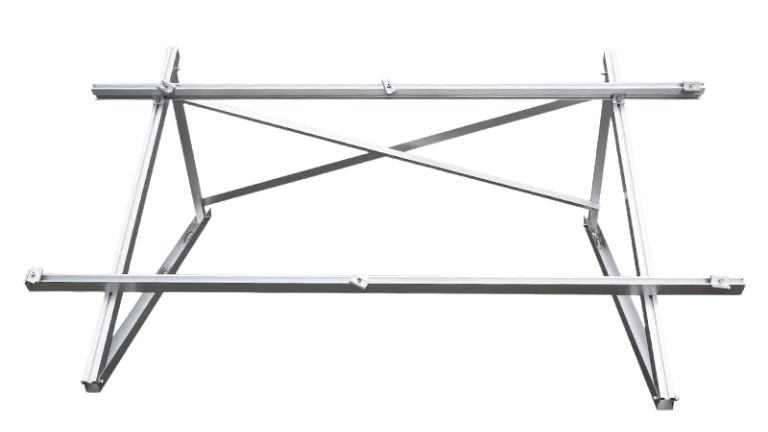
Solar panel brackets are essential components in solar photovoltaic (PV) systems, designed to securely mount solar panels in different installation scenarios such as rooftop systems, ground installations, wall-mounted systems, solar carports, and more. These brackets play a critical role in ensuring the stability and safety of the solar panels while optimizing their efficiency through proper positioning and orientation.
Aluminum solar panel brackets are particularly popular due to their lightweight design, corrosion resistance, and high structural strength, making them well-suited for a wide range of applications.
HTS-ALU is a leading aluminum extrusions supplier in China, equipped with 40 advanced extrusion production lines to deliver high-quality PV panel aluminum profiles tailored to the needs of global markets.
Types of Solar Panel Installation Brackets
Aluminum solar panel installation brackets are versatile and essential components in solar photovoltaic (PV) systems, designed to securely mount solar panels. With their lightweight, durable, and corrosion-resistant properties, aluminum brackets provide solutions for various installation scenarios ranging from rooftops to ground-mounted systems. Below are the common types of aluminum solar panel brackets categorized by application and structure:
Roof-Mounted Aluminum Brackets
Roof-mounted brackets are designed for residential and commercial rooftop installations and can adapt to different roof types. For sloped roofs, brackets typically include hook systems for tiled roofs or clamps for metal roofs to ensure stable and secure mounting of solar panels. For flat roofs, adjustable tilt brackets are used to optimize panel angles and improve energy efficiency. Non-penetrative designs, such as ballast systems, protect the integrity of the roof by securing the structure without drilling, making them ideal for waterproof roofs.
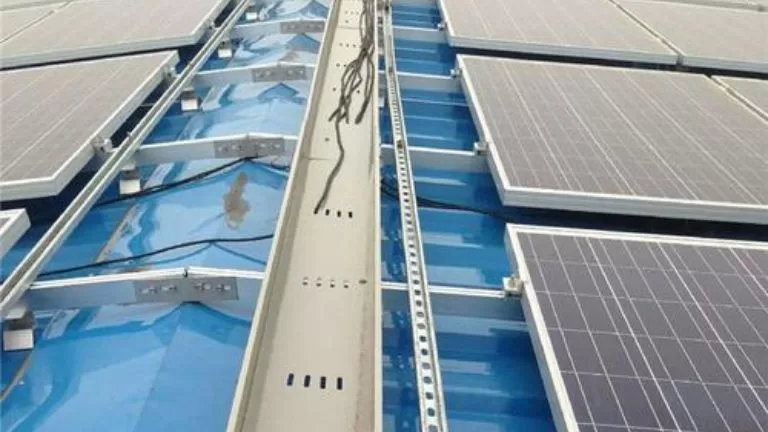
Ground-Mounted Brackets
Ground-mounted brackets are ideal for large-scale industrial or commercial solar projects where ample open space is available. These brackets provide robust structural support for solar panels to be mounted on ground surfaces or concrete foundations. They are designed to withstand heavy wind and snow loads, ensuring durable installations in extreme environmental conditions. Their flexible and adjustable configurations allow for optimal tilt angles and easy installation, making them a popular choice for high-capacity solar systems.
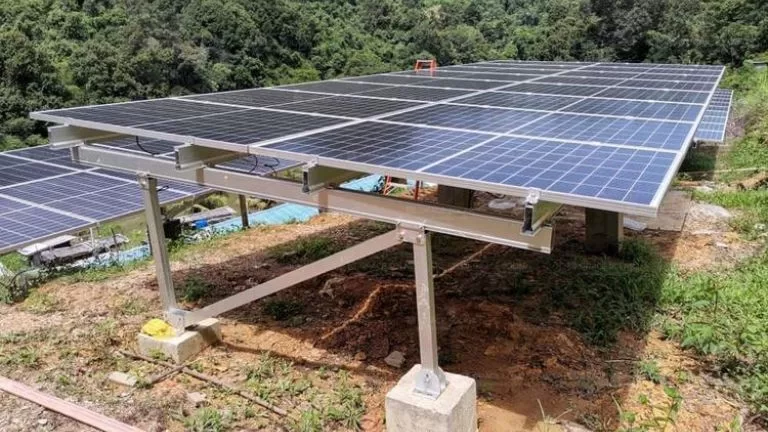
Tracking Brackets
Tracking brackets increase energy efficiency by adjusting the panels’ angle to follow the sun’s movement. Single-axis tracking brackets rotate horizontally to match the sun’s east-to-west trajectory, significantly improving sunlight utilization during the day. Dual-axis tracking brackets adjust both vertically and horizontally, offering precise alignment with the sun’s path to maximize energy output. Tracking brackets are ideal for large-scale systems where efficiency is a priority.
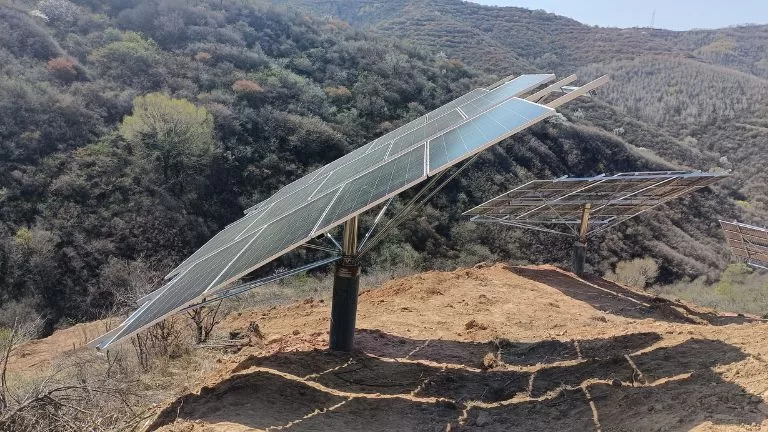
Wall-Mounted Brackets
Wall-mounted brackets are designed for vertical solar installations, commonly used in photovoltaic curtain walls or Building Integrated Photovoltaic (BIPV) systems. These brackets provide secure mounting for panels on vertical surfaces, making them suitable for buildings with limited roof or ground space. Wall-mounted systems offer both aesthetic appeal and functional energy generation, making them particularly suitable for urban environments and architectural solar designs.
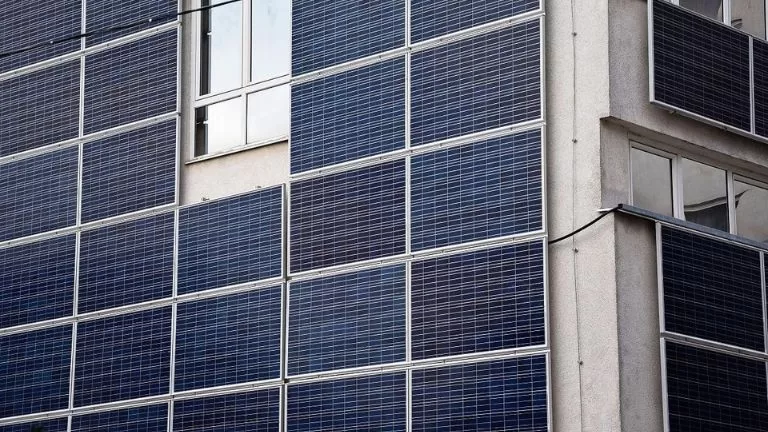
Carport Brackets
Carport brackets are specialized for mounting solar panels on the roof of carports, offering a dual-purpose solution. These brackets generate solar power while providing shade and protection for vehicles. Made from lightweight yet durable aluminum, carport brackets are easy to install and offer long-term corrosion resistance. Widely used in residential, commercial, and public parking spaces, they combine practicality and sustainability in one efficient system.
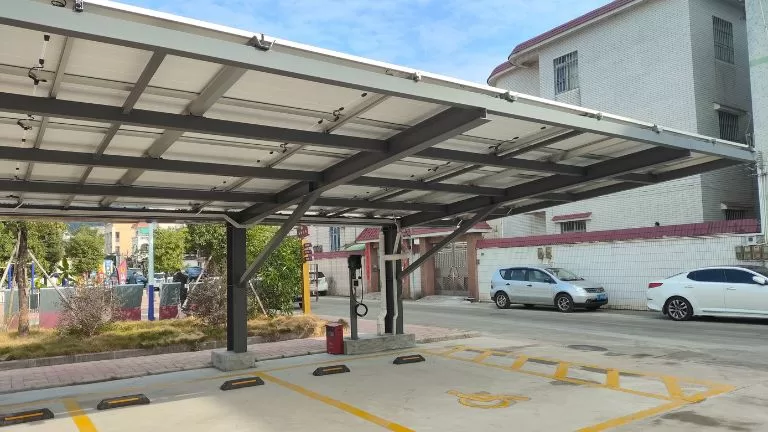
Aluminum PV Panel Brackets Capabilities
As a leading aluminum extrusion manufacturer in China, we excel in providing high-quality aluminum profiles specifically tailored for the solar panel mounting industry and other diverse applications. Our comprehensive manufacturing capabilities ensure precision, efficiency, and reliability throughout every stage of production. From custom mold design to advanced extrusion processing, surface treatments, and detailed fabrication, we deliver aluminum PV brackets that meet the strictest international standards and accommodate the unique requirements of each project.
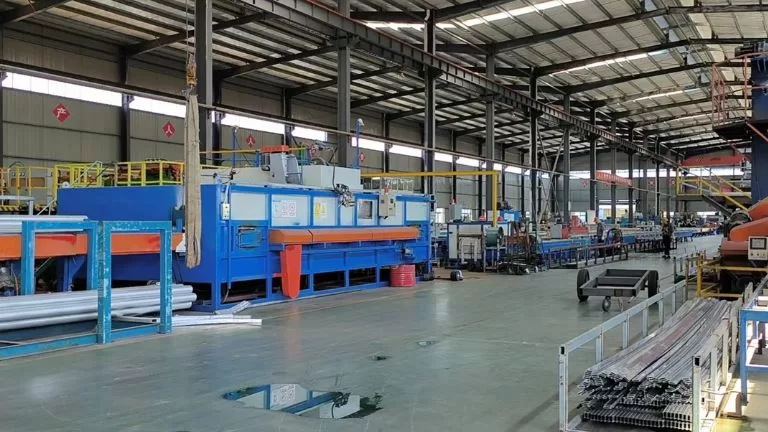 Our facility is equipped with more than 40 advanced extrusion lines, including cutting-edge equipment like the 6000-ton extrusion press, which allows us to produce aluminum profiles in various sizes and complexities. This high-capacity production capability supports both standard industrial designs and specialized profiles required for customized applications such as solar PV brackets. The flexibility of our extrusion technology means we can cater to large-scale industrial orders while maintaining precision and efficiency for smaller custom projects.
Our facility is equipped with more than 40 advanced extrusion lines, including cutting-edge equipment like the 6000-ton extrusion press, which allows us to produce aluminum profiles in various sizes and complexities. This high-capacity production capability supports both standard industrial designs and specialized profiles required for customized applications such as solar PV brackets. The flexibility of our extrusion technology means we can cater to large-scale industrial orders while maintaining precision and efficiency for smaller custom projects.
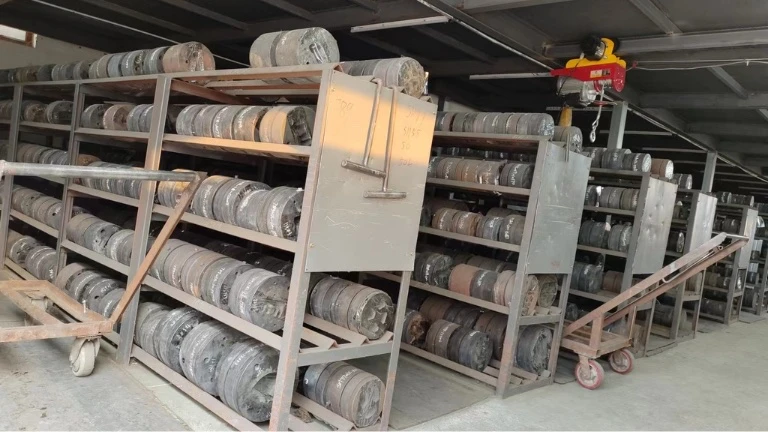 We possess the expertise to design and produce extrusion molds in-house, ensuring precision and efficiency in aluminum profile manufacturing. Our experienced team works closely with clients to develop custom molds based on drawings or samples, ensuring optimal performance for their specific requirements. Typically, the mold production process takes about 7 days, after which we provide samples for client confirmation before beginning full-scale production.
We possess the expertise to design and produce extrusion molds in-house, ensuring precision and efficiency in aluminum profile manufacturing. Our experienced team works closely with clients to develop custom molds based on drawings or samples, ensuring optimal performance for their specific requirements. Typically, the mold production process takes about 7 days, after which we provide samples for client confirmation before beginning full-scale production.
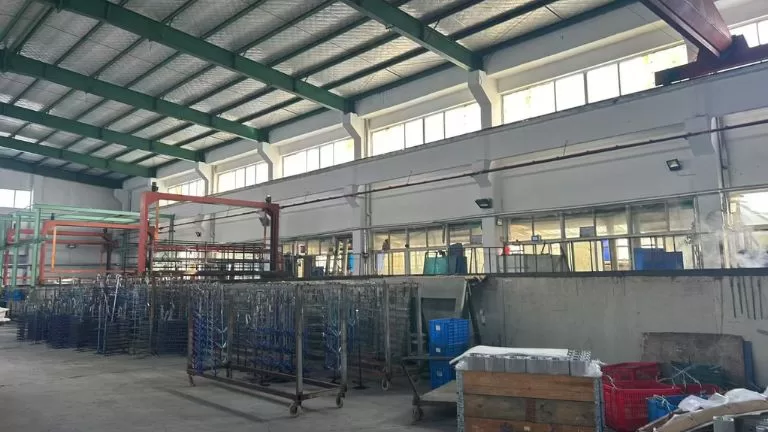
To enhance the durability, corrosion resistance, and aesthetic appeal of our aluminum PV brackets, we offer comprehensive surface treatment options. These include anodizing, powder coating, and other finishing processes specifically designed for outdoor environments. Our surface treatments comply with international environmental and quality standards, ensuring the longevity and performance of PV mounting systems in challenging weather conditions.
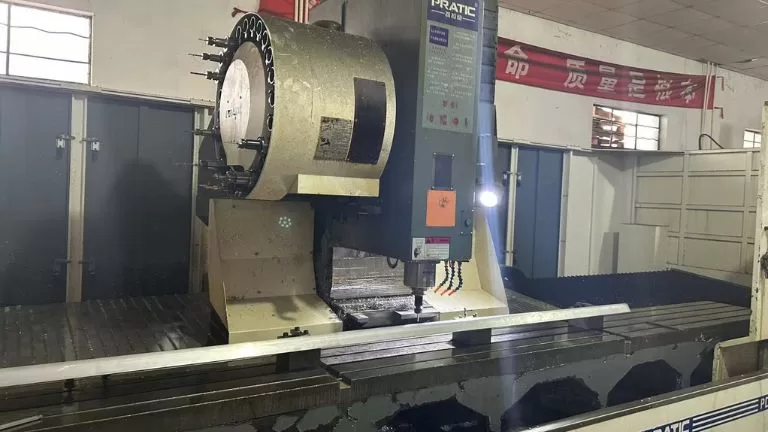
With state-of-the-art CNC machining and fabrication technology, we deliver precisely crafted aluminum PV brackets ready for easy assembly in solar panel mounting systems. Our capabilities include drilling, cutting, stamping, and bending aluminum profiles to exact specifications, ensuring seamless integration into diverse structural designs. This high level of customization guarantees the optimal performance of aluminum solar brackets in residential, commercial, or industrial installations.
Adjustable Aluminum Solar Panel Brackets
Adjustable brackets are versatile components that enable solar panels to be tilted for optimal energy generation by aligning with the angle of sunlight. Suitable for both ground-mounted and rooftop installations, these brackets are especially beneficial in regions with varying seasonal sun angles, allowing for improved efficiency throughout the year. They can also be paired with tracking systems to further maximize energy output by dynamically adjusting to the sun’s movement.
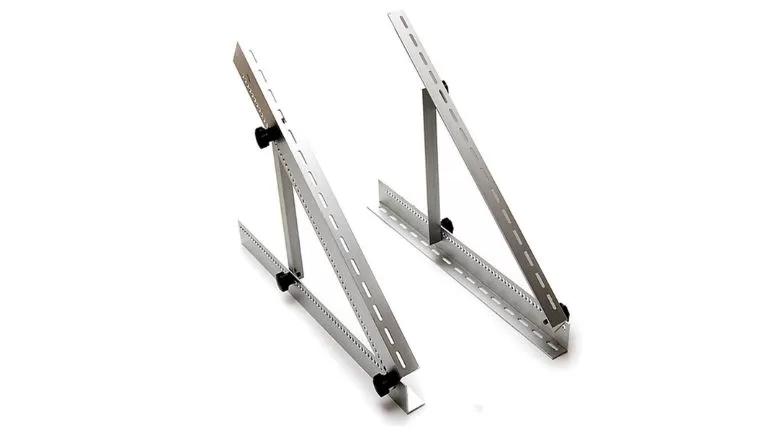
Advantages of Aluminum for PV Panel Brackets
Aluminum is widely used for solar panel brackets due to its unique properties, meeting technical, economic, and environmental demands.
1. Lightweight
Aluminum’s low density reduces the weight of solar mounting systems, simplifying transport and installation while minimizing structural loads on buildings or foundations.
2. Corrosion Resistance
Aluminum resists corrosion and oxidation, performing well in humid or coastal environments, ensuring long-term durability with minimal maintenance.
3. High Strength
Lightweight yet strong, aluminum supports solar panels, withstands wind and snow loads, and ensures stable, reliable performance.
4. Easy to Process
Aluminum is easy to cut, drill, and form, allowing for customization to meet diverse project requirements and simplifying installation.
5. Environmentally Friendly
100% recyclable, aluminum reduces waste and aligns with sustainable development goals, making it an eco-friendly choice for renewable energy systems.
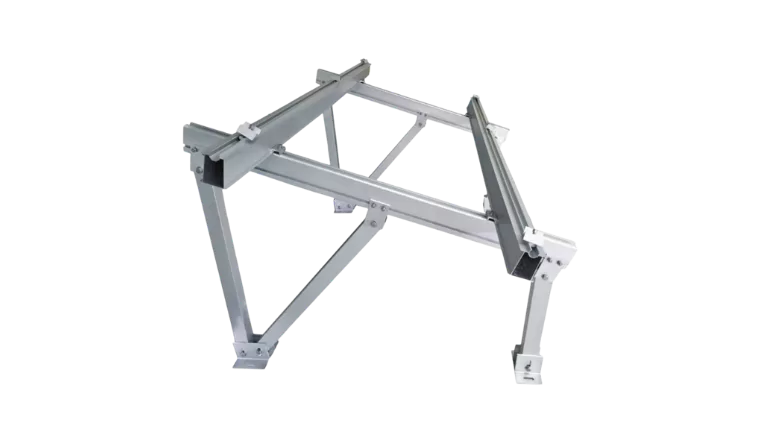
Aluminum Grades for Solar Panel Brackets
To meet the performance requirements of solar panel mounting systems, several aluminum alloys are widely used. Each alloy offers a unique combination of strength, corrosion resistance, and adaptability, making them ideal for specific installation scenarios.
6063-T5 Aluminum Alloy
6063-T5 is one of the most commonly used aluminum alloys for lightweight solar panel brackets. Known for its exceptional corrosion resistance and excellent anodizing properties, this alloy is ideal for creating durable and visually appealing frames. Its lightweight nature makes it a preferred choice for rooftop installations and other applications where material efficiency is crucial.
6005-T6 Aluminum Alloy
6005-T6 is a high-strength aluminum alloy suitable for mounting systems designed to bear greater loads. With superior mechanical properties, it is commonly used for ground-mounted solar panel systems or installations in environments subjected to higher wind or snow loads. Its combination of strength and durability ensures reliable performance over time.
5052 Aluminum Alloy
5052 aluminum stands out for its exceptional corrosion resistance, making it the go-to choice for solar panel brackets in coastal areas or locations exposed to salt spray and humid conditions. This alloy also offers good strength and flexibility, making it perfect for long-lasting installations in harsh environments.
Anodizing Aluminum Solar Panel Brackets
Anodizing is one of the most common surface treatments for aluminum solar brackets, creating a protective oxide layer on the metal’s surface.
Advantages:
Significantly enhances corrosion resistance, making the brackets ideal for coastal and high-moisture environments.
Improves surface hardness, providing additional protection against scratches and abrasions.
Offers customization options with various colors for aesthetic purposes, while maintaining an attractive metallic finish.
Custom Solar Panel Brackets from Us
At HTS NEW MATERIALS, we specialize in manufacturing custom solar panel brackets using advanced aluminum extrusion technology. With over 40 production lines and the largest 6000-ton extrusion press in China, we offer high-quality, durable solutions for rooftop and ground-mounted systems, as well as corrosion-resistant options for harsh environments.
Our capabilities include mold design, advanced machining, and surface treatments like anodizing, powder coating, and electrophoresis, ensuring brackets that are lightweight, strong, and long-lasting. Whether you need adjustable or heavy-duty brackets, our precision-engineered products are built for optimal performance and reliability.
Contact us today for a quote and bring your solar project to life with high-quality, tailored brackets!
RFQ of Solar Panel Brackets Aluminum Profile
HTS New Materials, based in Jiangxi Province, China, is a leading aluminum extrusion manufacturer with over 40 advanced production lines and powerful equipment, including a 6000-ton extrusion press. We produce a wide range of aluminum profiles for industries such as construction, industrial applications, and high-end doors and windows, including thermal break profiles. Our services extend to comprehensive surface treatments like anodizing, powder coating, fluorocarbon coating, and wood grain transfer, as well as advanced machining and fabrication capabilities such as CNC machining, drilling, and welding. Committed to quality and innovation, we deliver tailored aluminum solutions to meet the diverse needs of clients globally.
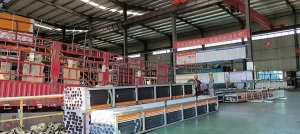

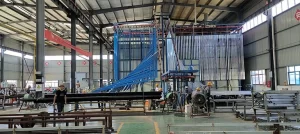
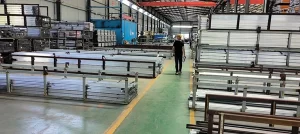

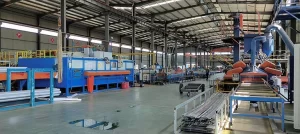
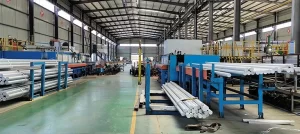
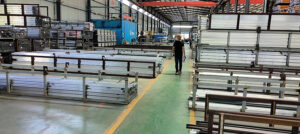
| Aluminum Grade | Key Features | Applications | Advantages |
|---|---|---|---|
| 6063-T5 | – Lightweight and corrosion-resistant<br>- Excellent anodizing properties | – Rooftop installations<br>- Lightweight structures | – Durable and visually appealing<br>- Easy to process |
| 6005-T6 | – High strength<br>- Superior mechanical properties | – Ground-mounted systems<br>- High-load environments | – Reliable under wind and snow loads<br>- Long-lasting performance |
| 5052 | – Exceptional corrosion resistance<br>- Good strength and flexibility | – Coastal areas<br>- Humid or harsh environments | – Ideal for salt spray exposure<br>- Durable in extreme conditions |
Aluminum extrusions undergo various surface treatments to enhance aesthetics, corrosion resistance, and functionality. Here are the common surface treatment methods used in the industry:
Main Surface Treatment Methods
Anodizing (Oxidation)
- Process: A controlled electrochemical process that forms a protective oxide layer on the aluminum surface.
- Features:
- Provides a durable, corrosion-resistant, and environmentally friendly finish.
- Produces a metallic finish with a variety of natural tones (e.g., silver, black, bronze).
- Improves surface hardness and protects against scratching.
- Applications: Architectural frames, decorative profiles, heat sinks.
Electrophoresis Coating (E-Coating)
- Process: After anodizing, the aluminum is coated with paint using an electrochemical process.
- Features:
- Enhances corrosion resistance and offers a smooth, glossy finish.
- Provides more color and texture variation compared to anodizing alone.
- Applications: Furniture profiles, indoor architectural components.
Powder Coating
- Process: Electrostatic application of powder paint, followed by curing under high temperature to form a solid coating.
- Features:
- Wide variety of colors and textures.
- Excellent weather resistance and corrosion protection.
- Cost-effective and highly versatile.
- Applications: Outdoor frames, fences, railings, general industrial use.
PVDF Coating (Polyvinylidene Fluoride)
- Process: A specialized fluoropolymer coating is applied in multiple layers, commonly over a pretreated surface.
- Features:
- Exceptional weather resistance and UV stability.
- Highly durable, resistant to fading, chalking, and chemical damage.
- Ideal for long-term outdoor use.
- Applications: Curtain walls, high-performance architectural facades.
Wood Grain Transfer Printing
- Process: A heat-transfer printing process that applies a wood grain effect onto a pre-coated aluminum surface.
- Features:
- Mimics the appearance of wood while retaining aluminum’s durability.
- Lightweight and weather-resistant alternative to natural wood.
- Applications: Furniture, decorative coverings, outdoor panels.
Film Lamination
- Process: Adhesive application of a protective or decorative film onto the aluminum surface.
- Features:
- Provides a glossy, textured, or patterned finish.
- Often used for applications requiring specific textures like marble or leather effects.
- Applications: Interior decor, windows.
Pre-Treatment Processes
Prior to surface treatment, the aluminum surface can be pre-processed for specific textures or finishes:
Brushing/Polishing
- Removes surface imperfections and creates a smooth, reflective finish.
- Often used for decorative purposes.
Sanding/Grinding
- Produces a matte or satin finish by applying abrasives.
Shot Blasting/Sandblasting
- Sprays abrasives at high velocity to create a textured surface, often used before anodizing for a uniform appearance.
Stretching and Tension Leveling
- Straightens the aluminum profile and improves shape accuracy after extrusion.
Cost and Durability Comparison Table
| Treatment Method | Process Cost | Surface Durability | Weather Resistance | Applications |
|---|---|---|---|---|
| Anodizing (Oxidation) | Medium | Very Durable | High | Architectural frames, industrial parts. |
| Electrophoresis (E-Coating) | Medium-High | Durable | Medium | Furniture, indoor parts, decorative uses. |
| Powder Coating | Medium | Highly Durable | High | Outdoor frames, industrial fixtures. |
| PVDF Coating | High | Extremely Durable | Excellent | Curtain walls, high-end exteriors. |
| Wood Grain Printing | Medium | Moderate (topcoat dependent) | Medium | Decorative panels, furniture. |
| Film Lamination | Low-Medium | Moderate | Low | Indoor decorations, windows. |
| Brushing/Sandblasting (Pre-Treatment) | Low | Not Applicable (Preparation only) | N/A | Preparation for further treatment. |
. Anodizing (Oxidation)
- Common Colors:
Natural silver
Black
Champagne
Light bronze
Dark bronze
Gold
2. Electrophoresis Coating (E-Coating)
- Common Colors:
Black
Champagne
Light bronze
Dark bronze
Custom metallic colors
3. Powder Coating
- Colors:
Can match any color based on the RAL color chart.
Offers textures like matte, gloss, satin, and custom finishes.
4. PVDF Coating (Polyvinylidene Fluoride)
- Colors:
Also customizable using the RAL color chart.
High-end finishes with matte or glossy effects.
5. Wood Grain Transfer Printing
- Colors and Patterns:
Mimics various wood types (e.g., oak, walnut, teak, mahogany).
Custom patterns available based on provided samples.
6. Film Lamination
- Colors and Patterns:
Includes textures like marble, leather, and solid colors.
Custom finishes and patterns based on provided samples.
Pre-Treatment Options (Impact on Final Color)
- Brushing/Polishing: Produces smooth or reflective metallic surfaces.
- Sandblasting: Adds a rough, matte texture before the final surface treatment.
We provide a wide range of machining services for aluminum extrusions to meet specific requirements. These include cutting off/section removal, slotting, drilling holes, tapping threads, bending, and localized stamping to create deformations. For example, we can trim extruded profiles to custom lengths, mill precise grooves, create threaded holes for fasteners, bend profiles into specific shapes, or apply localized stamping to achieve custom forms or deformation.
In addition to these processes, we also offer TIG/MIG welding to join aluminum components for a solid structure. Furthermore, our services include assembly of common accessories, such as brackets, corner connectors, screws, hinges, end caps, and rubber seals, providing complete and ready-to-install profile solutions tailored to your project needs. This ensures that we can handle everything from simple cuts to highly customized fabrication and assembly, all with precision and efficiency.
For custom aluminum extrusion projects, we accept a variety of drawing formats, including CAD files, STEP files, and PDF files. However, for extrusions that require additional machining processes, it’s recommended to provide STEP files, as they ensure precise 3D modeling for machining accuracy.
While PDF files are acceptable, converting them into CAD drawings may result in the loss of certain details, requiring us to manually redraw the design, which could increase lead time. For the fastest and most accurate quotation, we recommend providing CAD files (e.g., DWG/DXF) and STEP files to ensure efficient design evaluation and pricing.
Mold fees are an essential part of the custom aluminum extrusion process. Since every order requires a uniquely designed mold tailored to specific requirements, these molds cannot be used for other products. Therefore, the mold fee is necessary and non-negotiable.
We require 100% upfront payment of the mold fee before mold development begins to ensure timely production. However, as a token of appreciation for your support, we offer a refund of the mold fee or equivalent discounts once the order reaches a certain production volume. Specific policies can be discussed based on your order volume and collaboration details.
Our minimum order quantity (MOQ) varies depending on the size of the product. For smaller-sized products, the MOQ is typically 500kg, while for larger-sized products, it is 2 tons.
We will specify the exact MOQ requirements during the quotation process. If your order quantity does not meet the MOQ, we can still arrange production, but an additional fee will be applied to cover mold preheating and production setup time. Rest assured, this extra fee will be reasonable, and we aim to keep it as minimal as possible to ensure smooth cooperation.
Packaging can be customized according to your needs. Options include using protective film or paper to separate and protect the surface, or foam film for additional surface protection. Products can be palletized or packed into cartons, and the quantity per pallet or carton can be specified by the customer.
The standard packaging involves bundling several pieces together with plastic wrap and then securing them onto pallets. Any packaging requirements beyond the standard will be accommodated, and the associated costs will be clearly provided to the customer.
Mold production typically takes 7 days. After the sample is confirmed, producing a full container load of 26 tons generally requires 14 days for extrusion alone. If surface treatment is required, an additional 3 days will be needed. For machining, extra time will be required depending on the complexity and volume of the machining work. The exact additional time for machining will be determined based on the specific processing requirements.
Aluminum profiles are naturally corrosion-resistant due to the formation of a thin, protective oxide layer when exposed to air or water. This oxide layer is stable and self-repairing, meaning that even if the surface is scratched or cut (such as at exposed ends or during processing), the aluminum will not rust or corrode like iron or steel. Instead, the exposed areas will quickly form a new oxide layer, providing continuous protection against further oxidation.
With proper design, installation, and maintenance, aluminum profiles can last for decades, even in challenging environments. For example, untreated aluminum can easily withstand 20-30 years in outdoor applications, while profiles with surface treatments like anodizing or powder coating can last even longer, often exceeding 50 years. This makes aluminum an excellent choice for applications where durability and long-term performance are essential.
The price of aluminum profiles consists of several components: raw material costs, extrusion processing fees, surface treatment fees, machining costs, and additional packaging fees. Among these, the cost of aluminum as a raw material tends to fluctuate frequently, while other fees remain relatively stable. Due to these fluctuations, our quotations are typically valid for 7 days.
Pricing can be structured in different ways depending on the product and requirements. It can be calculated by weight (e.g., cost per ton), by length (e.g., cost per meter), or by piece (e.g., cost per unit). For products involving extensive machining, such as heat sinks, pricing is generally calculated on a per-piece basis to accurately reflect the additional processing costs. This flexible pricing approach ensures the quote is tailored to the specific needs of the customer.
We can manufacture aluminum profiles in compliance with technical requirements that meet European standards (EN), American standards (ASTM/AA), or other standards as specified by the customer. Custom production is tailored to ensure that the profiles meet the specific standard requirements requested.
Our production equipment is designed for the metric system. If the drawings provided are in the imperial system, we will convert them into metric units for production to ensure accuracy.
It is important to note that while we can machine imperial-threaded holes for fasteners, if you require us to supply matching imperial fasteners, they may not always be available in stock. Custom orders for imperial fasteners typically require a large volume for production. Please consider this when planning your project.
